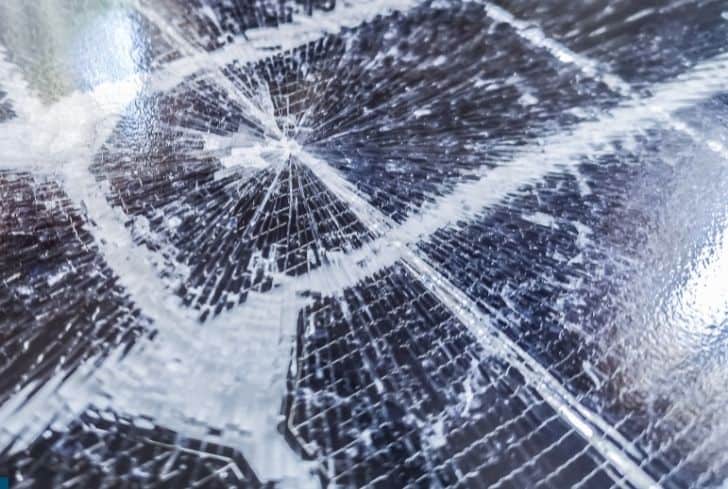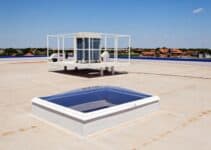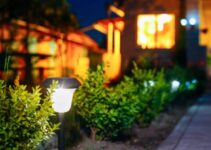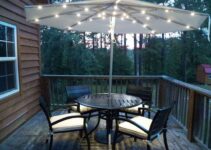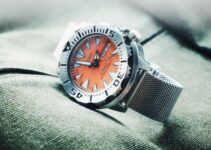Hails are sometimes likened to snowfalls by people who do not know the difference, but it isn’t. If you live in an area that regularly encounters hailstorms, you should be familiar with the icy lump. Usually, hails are colder than snow because they form at a higher elevation. They can also be quite dangerous in the most severe conditions.
Due to how dangerous hailstorms can be, a lot of property owners wonder, can hail cause damage to their solar panels? Yes, hails can cause damage to solar panels. Still, they can only cause damage depending on the intensity of the hailstorm.
Suppose you want to learn more about how hails can affect your solar panels. In that case, this article will cover the size of hail that can damage a solar panel, if your insurance can cover your hail damage, and how to detect one. Let’s begin!
Are Solar Panels Hail-proof?
Fortunately, thanks to the rigorous industry standards, solar panels undergo extensive testing for improved durability during extreme weather conditions before manufacturers introduce them. Thus, solar panels nowadays are highly resilient against heavy winds, rain, and hails.
In addition to being hail-proof, solar panels are generally weather-resistant. As a result, they can handle most weather-related stress without collapsing. This is due to a panel’s highly durable glass and aluminum casing.
What Size of Hail Can Damage a Solar Panel?
Although different hail sizes are reported to have damaged cars and solar panels in the United States, hail usually damages solar panels with sizes greater than 2 inches.
Most solar panels are verified to be able to withstand hail. Thus, they have been tested to withstand about 1 inch to 1.75-inch diameter hail with an expected speed between 25 to 40 mph. However, you might wonder what happens when a bigger-sized hail falls. So let’s take a look.
Hails are ice particles that fall from the storm. The particle size should be greater or equal to 0.2 inches to be called hail. However, light hailstorms of this size do not damage your solar panels.
In contrast, according to the official definition of the National Weather Service, severe hailstorms are about one inch or greater. Still, solar panels can handle up to 1.75 diameter of hail fall due to their thick tempered glass of around 3.2 mm protecting them from damage.
Some states might experience extremely high hailstorms in rare cases, such as the hailstorm in Vivian, South Dakota. The hailstorm was recorded as the largest in the United States, with 8-inch diameter, 18.625 inches in circumference, and weighing in at 1.9375 pounds.
How Are Solar Panels Designed And Tested To Withstand Hail?
Most solar panel manufacturers test their solar panels in hailstorm conditions, such as placing them under hail to withstand up to a diameter inch falling at 50 miles per hour. Another industry standard tests involve shooting tennis-sized ice balls to the solar panel at 70mph.
They are also designed with tempered glass that’s strong enough to handle hailstorms. Hence, most solar panels are hail-proof. Although, there might be some damage in extreme conditions. Still, due to the different industry standards testing, a decent solar panel will withstand hailstorms and hurricanes under acceptable conditions.
Do Solar Panels Get Damaged By Snow?
Suppose you live in an area with inclement weather; you may be worried if heavy rain or snow can ruin your solar panels. The good news is, no, snow does not ruin your solar panels. In fact, they can be quite beneficial for your panels.
Several people believe that solar panels have reduced efficiencies or do not work in cold, icy, or snowy periods; this is untrue. If your solar panels are adequately installed in the right direction, they will serve you efficiently.
Your solar panel can benefit from snow by keeping it clean due to the panel’s anti-soiling properties, which allows any dirt on the panels to bond with the snow and wash off when the snow melts. This enhances an even greater efficiency. But, a common downside of heavy snow on solar panels is that it can be a strain on inadequately fixed panels.
What Are Some Ways To Protect Your Solar Panel From Hail?
1. Use a Layer of Methacrylate as a Protective Cover
Most solar panels are made of glass and are very fragile. Thus, an excellent way to protect those parts is to apply a layer of Methacrylate to protect them. Coating the solar panels with extra protection is a very simple way to double the panels’ durability.
However, it is also important to note that enough care must be taken when applying the protective coating layer to avoid interfering with the functioning part of the solar cells.
2. Research Before Getting a Solar Panel Fixed
Prevention, they say, is better than cure. It’s better to understand how strong the weather or hailstorm in your area is before going ahead and fixing solar panels on your property. Doing proper research on your region’s weather will help you prepare better and know what extra length to go.
This will ensure that your solar panels can be efficient for the long term. Additionally, you might want to discuss with a specialist the best choices for you based on your area’s weather.
3. Use a Protective Cover
Using a protective cover is a great way to protect your solar panels from hail. The installation of a protective cover won’t only last long for over ten years. It would also protect your solar panels during sunshine to prevent overheating.
The covers are made from Sunbrella marine fabrics. Thus, they are very durable and strong enough to absorb any shock. It can also withstand hailstorms blowing at 50mps and other extreme weather.
It is vital to note that tons of solar panel protective covers are on the market. However, not all are suitable for protecting the panels against hails. Hence, ensure that you are careful when purchasing the right one.
4. Arrange The Panels To Allow Hail To Slide
A straightforward way to protect your solar panels is to ensure that hail doesn’t stay long enough on them to accumulate. This will help reduce their weight on solar panels and any effect it might have on their efficiency. Hence, you should consider it if you live in an area that experiences frequent hailstorms.
Ensure that your solar panels are mounted at an angle where they could easily slide down. Knowing the direction of hailstorms and winds in your area would help you adjust the solar panels to face the opposite direction.
Does Homeowners Insurance Cover Hail Damage To Solar Panels?
Homeowner insurance is financial protection that you purchase from an insurance company to help pay for damages done to your home from unforeseen events. Solar panels, when fixed, are a permanent attachment to your roof, and thus, they become a part of your home.
So, suppose you worry if your homeowner insurance covers damage to solar panels? Do not worry, because they do. Since solar panels are considered a part of your home, they are covered by insurance against hail and other weather conditions that might cause damage to your solar panel, such as lightning, fire, wind, etc.
There are different types of insurance, but standard homeowner insurance protects you in diverse ways. Let’s take a look at some of them.
Structure Of Your Home And Belongings
Your homeowner policy offers financial protection for the structure of your home. Hence, your insurance provider pays to rebuild or repair your home damaged or destroyed by fire, hurricane, or other causes. In the case of property damage inside the building, standard homeowner insurance also covers belongings.
Belongings such as furniture, clothes, jewelry, sports pieces of equipment, and others are covered. The coverage is usually around 50 to 70 percent of the insurance that’s on the building. Trees, plants, and shrubs are covered under standard homeowners insurance unless they die of disease or poor maintenance.
Liability Protection
Liability Protection covers you against having to spend your own money on bodily or property damage that you may cause to other people. It also covers damage your family members, such as your children or pets, might cause others.
For instance, if you hire a contractor who gets hurt on your property, the liability protection covers this bodily damage. Generally, the liability limit begins at a hundred thousand dollars. Still, you could discuss if you can purchase higher protection with your insurance provider.
Additional Living Expenses
This pays the extra costs of staying temporarily in a hotel if you cannot live in your home due to damages or while repairs are going on in your home. It covers your temporary housing bills, dining fee, and other costs.
The best thing about the additional living expenses protection is that even if you use it up, your insurance provider will still pay the full cost incurred while rebuilding your home due to its homeowner’s policy limit.
How To Detect Hail Damage To Your Solar Panels?
It can be pretty difficult to detect hail damage on your solar panels. That’s because hail damage isn’t so obvious for so many reasons, unlike a smashed window.
Still, for starters, they are mostly mounted on the roof. You might not know they are damaged unless there’s a decrease in your solar panel’s efficiency or they stop working after a hailstorm. So, let’s see how to detect hail damage.
1. Inspect Your Solar Panel
The first thing to do when you want to detect any damage inflicted by hail on your solar panel is to inspect it. It’s that simple, so if you can see your solar panels from the ground, take a look.
Suppose your solar panels have broken, cracked glass, or dark spots. Here’s a sign that the solar panel has been damaged. Therefore, you might want to hire a professional to check it and proffer the best solution to the damage.
2. Track The Performance of Your Solar Panel System
Suppose you have checked for physical damage and couldn’t find one. In that case, another method to detect hail damage is to measure the performance of the solar panels by a mobile app or a monitoring portal. A decrease in performance right after a heavy hailstorm is most likely a sign that your solar panels have been damaged.
Therefore, you should contact a reliable installer or your installation company to come and check the panels. However, if you don’t have any way to track your panel’s performance and you are uncertain if it’s damaged or not. Then, you could contact your solar installer to inspect them.
Conclusion
Solar panels, in general, have a design that can handle hailstorms, and they have also been tested according to industry standards to withstand hails. Yet, hails can damage solar panels in some rare cases when the hailstorm is extremely severe.
